
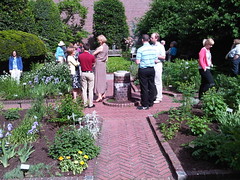
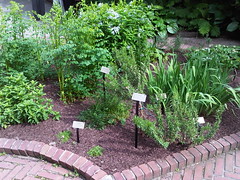
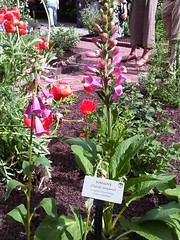
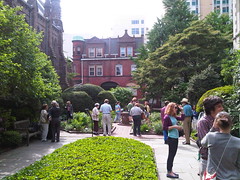
Having just missed the opening reception for Anthony Campuzano’s Alright, Still and Jennifer Levonian’s Her Slip Is Showing, I stopped in at Fleisher/Ollman Gallery to view their work. The pairing of the two artists is compelling, as are the individual pieces; touching on them only in this post would be to shortchange them, so I think I will return to the topic in a subsequent entry. Suffice to say, Levonian’s animations are visually beautiful and have depth, and Campuzano’s pieces show intriguing hints of new ideas.
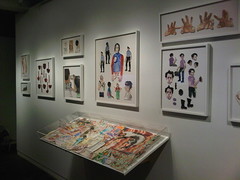
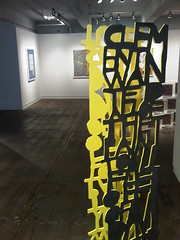
Vox Populi was up next. There were some uninspiring offerings, like Gabriel Boyce’s insubstantial—correction—minimal, Owning Cats, and Brian Graf’s photography-based The Sun Room.

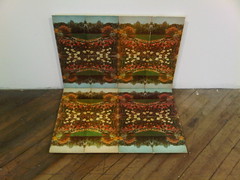

In case you didn’t have enough places to see Ryan Trecartin’s films, The Research (Re’Search WaitS) is screening in the video lounge corner of Vox. This is the same film, with possibly a slightly different edit, that has already been shown at FWM last summer and Tyler Gallery in the fall for the Wolgin Prize; two films from this same cycle are also showing at ICA as part of the exhibition Queer Voice. Additionally, it is devoid of the helpful context in previous installations, when framed with props and detritus left over from the making of the films.
Juliana Foster and Lori Spencer’s Fair Ophelia takes on the classic dramatic character, long a favorite of artists (particularly those of the painfully sensitive Pre-Raphaelite persuasion), but they offer a nice blend of different media to examine her path of doom in a less direct way.
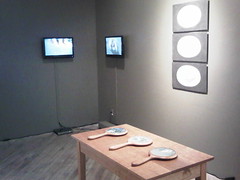
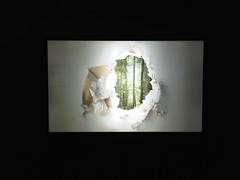


I spent the most time with Nike Desis’ Collect Call which examines the history and lifecycles of artist-run spaces in Philadelphia. I am young and relatively new to Philadelphia, so the project was eye-opening. There is a small reading area where one can browse defunct local art publications, which were once plentiful and each as unique as the wide spectrum of local creativity which they represented; I commented to Nike that I suppose today we have blogs, but we agreed that they will never be the same as a physical printed edition that one can hold in the hand. There were three survey questions writ large in the gallery that one could vote on with a paper ballot (see images). Each question had three possible responses, all including the Facebook-friendly option of “It’s complicated”.
Finally, there were seven people “on call” for different periods during the evening, available to discuss their expertise on artist-run initiatives in Philadelphia. They were not present in the gallery, but cell phones were provided to call them. I spoke with Sid Sachs of UArts. As a point of departure I asked him about his recent Seductive Subversion: Women Pop Artists 1958-68 exhibition. The narrative took various turns, in which I learned, among many other things, that the second ever Pop Art show took place in Philadelphia in 1961 at the Gershman Y, featuring most of the future heavy-hitters of Pop. He was gracious, encyclopedically well-informed, and passionate about visual art in Philadelphia and preserving its heritage, as well as saving it from being a footnote to that of New York. The phone conversations between the on-call experts and gallery participants, effectively oral histories, will be transcribed, becoming part of the larger project.
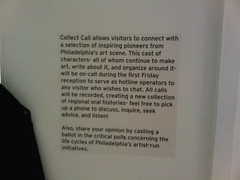
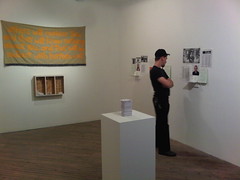
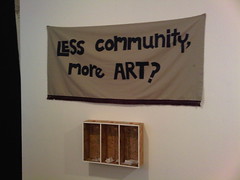
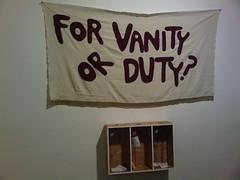
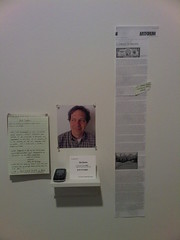
I then descended one floor to Grizzly Grizzly to find The Honeymooners, a performance/happening. The small room was decorated like a kitchen out of Pee Wee’s Playhouse, with cartoonishly proportioned and angular appliances and furnishings of a decidedly mid-1950s design aesthetic. Performers Jennifer Catron and Paul Outlaw invited free interaction, she energetically whipping up frosting for free-for-the-taking cupcakes and he sitting in his undershirt, swigging beer and grumpily poring over the classifieds in the paper. The fridge was loaded to the brim with nothing but Miller High Life, which he freely offered to visitors. He also claimed to be looking for jobs, of which he had only identified three.


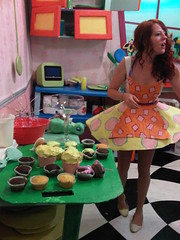
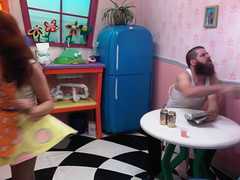
The Fabric Workshop and Museum came next, with its two offerings Paula Wilson: First Story and Duo-Chrome/Duotone: Ink To Light. Paula Wilson’s installation features a mixture of recent work, as well as brand new pieces made in collaboration with FWM. Slightly hidden away on the eighth floor of the building, it is perhaps the best use of this gallery space since the opening of the new building in 2008. The work is unabashedly gorgeous, seemingly a celebration of urban life, and contains humorous flourishes, such as the silkscreen printed pigeons scattered throughout the gallery. The centerpiece, First Story, appropriates the form of the building’s arched windows, besetting them with a faux-stained glass pane of stitched translucent fabrics.
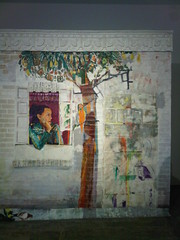

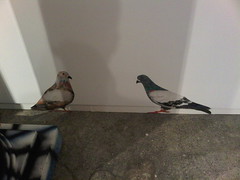

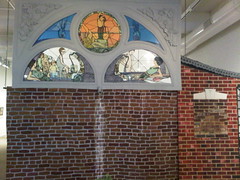
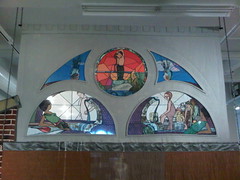
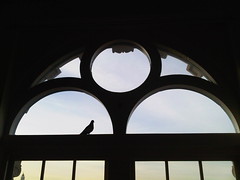

Meanwhile, Duo-Chrome/Duotone, guest-curated by Ruth Fine of the National Gallery, takes over both the first and second floor galleries. It is yet another exhibition drawing from the FWM permanent collection—WAIT, don’t run away! Yes, there have probably been as many “collection shows” at FWM in the past decade as there have been years, running the gamut of excellent, to adequate, to creatively bankrupt. This is partly due to a top-down lack of exhibition planning and foresight; these shows were often used as a stopgap measure when no new artist-residencies were close to bearing fruit and shows on display would expire without planning as to what would come next. But with this exhibition, Kippy Stroud, the Founder and Artistic Director, has finally allowed an outsider (and one without the complication of any close or extended family relation, at that) to plumb and reconsider the rich permanent collection, permitting her to work unperturbed and with relative budgetary liberty. Fantastic works which have not seen the light of day since they were made, perhaps twenty to thirty years ago, reemerge victorious and as vital as when they first came into being, holding their own against pieces made in the Nineties and Aughts. Add to this the gravitas, vision, and scholarship that Ruth Fine brings, and you have a formidable exhibition worthy of the institution’s august back catalogue of artist collaborations.

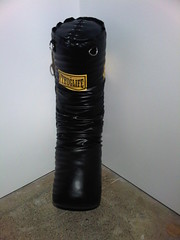
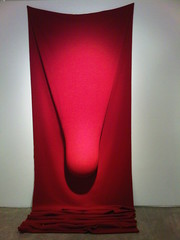
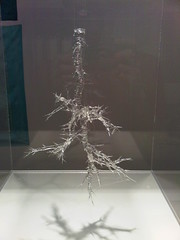
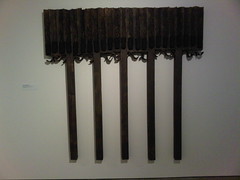
I ended my evening at Space 1026, where Étincelles features a clutch of three artists from Montreal. I considered Emi Honda’s found object dioramas to be charming and nostalgic microcosms, perhaps miniature sets where a Lilliputian vignette might play out. I also enjoyed Nadia Moss’s ink and watercolor compositions, which betrayed a fixation on ducks and geese. As for Leyla Majeri’s portion, first I wrote it off, but then came back to it because I thought there was more going on that meets the eye, but ultimately I was not sure what.


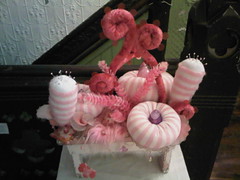
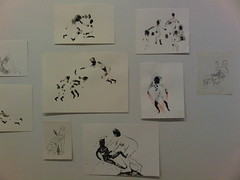
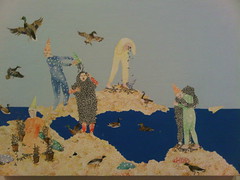
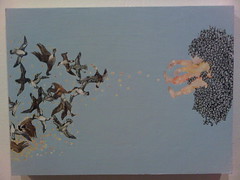
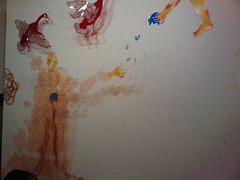
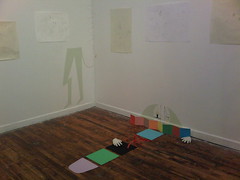
No comments:
Post a Comment